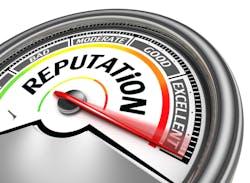CEOs' Personal Reputations at Risk as Corporate Attacks Mount
The level of general hostility toward institutions today and the coarseness and volatility of attacks against them has created new challenges for reputation management. Also new is the personalization of those attacks and the apparent need for anger against institutions – particularly large companies – to be directed in a very focused and harsh fashion toward CEOs and others in corporate leadership positions.
It’s part of a CEO’s job description to be applauded for their company’s successes and held accountable for its mistakes. But today’s environment adds another dimension of complexity to reputational risk management and makes CEOs’ positions especially precarious – with no industry and no CEO invulnerable to attack. What we are seeing is not a passing trend but a new condition that executives need to prepare for.
Consider these findings from a recent Steel City Re study:
- Financial losses related to reputational attacks have increased by over 400% in the past five years – and that upward trend is continuing.
- An increase in generalized anger among the public is demonstrated by a measurable increase in angry posts on social media.
- There has been an increased tendency for interested parties, ranging from politicians to activist investors, to direct that anger toward individuals – meaning CEOs and senior management as well as boards of directors.
- The weaponization of social media has made it possible for this anger to be harnessed and directed rapidly and with greater volume and ferocity than ever before.
Every industry has been touched by these trends – Uber, Wells Fargo, Mylan and Volkswagen are a few notable examples that spring to mind. In each case, the personal reputations of senior executives and board members stood in the crosshairs right alongside their company’s corporate brand. But unlike corporate brands, personal reputations are less resilient and the consequences for leaders are much more severe. For instance, board members can lose their board seats, and the income that comes with it, and CEOs their jobs as well as future opportunities.
Reputational threats are inevitable, which every company acknowledges, but social media and online “news” sources make discerning the truth difficult. These media have given anyone with the desire – be they members of the public, politicians, or activist investors – a public platform for voicing their anger whenever there’s a perceived corporate misstep. Regardless of their validity, battles waged in the volatile court of public opinion measurably impact a company’s brand, market cap, margins and income. And they circulate at a rate that can turn a threat into a crisis at the drop of a hat.
Boeing, Lockheed Martin, and General Motors each learned this lesson when President Donald Trump’s Twitter activity resulted in all three manufacturing companies sustaining significant hits to their stock prices. In the case of Boeing and Lockheed Martin, they came under fire for the “out of control” costs of a new 747 Air Force One and the F-35 program; General Motors received a barefaced threat to “Make in USA or pay big border tax!”
Although those leaders came out with their personal reputations intact, the manufacturing industry also has seen individuals in leadership positions suffer drastic measures for corporate woes.
For example, despite having a strong reputation and history of success, questions arose concerning PPG Industries’ CEO Michael McGarry’s future when he failed to acquire Dutch rival Akzo Nobel last June. Simultaneously, activist investor Elliott Management tried to oust Akzo chairman Antony Burgmans for standing in the way of the takeover.
Elliott Management led another ouster campaign against CEO Klaus Kleinfeld, just months after he facilitated Arconic’s widely applauded split from aluminum giant Alcoa Inc. Soon after resigning from Arconic, Kleinfeld also resigned from Morgan Stanley’s board, a position he’d held since 2012.
CEOs can no longer count on boards to have their backs and are more vulnerable than ever before.
- Fewer CEOs are chairing boards. According to data analytics firm Equilar, among S&P 500 companies, 35.1% now have a non-executive chairman, up from 27.7% in 2012.
- Boards are being tougher on CEOs generally, adopting measures like “say on pay,” shorter tenures and threats of compensation claw backs as punishment for setbacks. That sets the stage for CEOs to find themselves walking a very lonely plank when their companies face public crises.
- CEOs are turning over in greater numbers. In 2016, according to SpencerStuart, 58 of the S&P 500’s CEOs transitioned, although not all were pushed out following crises. That is the highest number since 2006, a 13% increase over 2015, and a 57% increase over 2012.
Top manufacturing executives need to focus on the personal ramifications – and the tools they need to protect themselves and their companies from these new types of threats. Standard insurance products, like D&O, may offer protection from legal liability, but in the court of public opinion, they cannot deter reputational attacks or provide indemnification for going-forward financial losses when they occur. CEOs need new tools like reputation assurance products to provide third party warranties and demonstrate good governance in a way that creates an easy to understand, and completely credible alternative narrative when stakeholder dissatisfaction rears its head. If a third party has scrutinized the company’s governance and finds it worthy of standing behind, it lends credibility to that company and serves as a shield against future reputational attacks. And like other forms of coverage, it indemnifies losses that affect companies and their leaders personally.
Dr. Nir Kossovsky is CEO of Steel City Re, which analyzes the reputational strength and resilience of companies and provides insurance products that protect those companies, their officers and directors against financial losses when reputational crises occur.
About the Author
Dr. Nir Kossovsky
CEO
Dr. Nir Kossovsky is CEO of Steel City Re, which analyzes the reputational strength and resilience of companies and provides insurance products that protect those companies, their officers and directors against financial losses when reputational crises occur.
